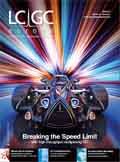Event News
Upcoming Events
17-ISSS
The 17th International Symposium on Separation Sciences (17-ISSS) will be held on 5–9 September 2011 in the Hall of Grand Hotel Napoca, Cluj-Napoca, Romania. The main purpose of the ISSS is to offer young researchers the opportunity to learn more about the fundamental and practical aspects of modern chromatographic techniques for analytical, preparative and industrial purposes.

The symposium will attract separation scientists from academia and industry who are active in chromatography, electrophoresis, hyphenated and related techniques, and give them the opportunity to present their latest results and establish new collaborations.
The scientific programme features many LC-focused lectures, including LC–NMR — Present Status and Future; Selected New Developments in HPLC Separation of Enantiomers Using Polysaccharide-Based Chiral Stationary Phases; Chameleon-like" Columns with Combined Retention Properties — Applications in Aqueous Normal-Phase and Reversed-Phase HPLC; Analytical and Thermodynamical Studies of Chiral Separations in HPLC; and Large Volume Injection of Sample Diluents Non-Miscible with the Mobile Phase in Liquid Chromatography: Principles and Applications.
A wide range of applications will be discussed, including: Critical Assessment of "Critical Chromatography" of Synthetic Polymers; Smart Surfaces in Determination of Mycotoxins in Different Matrices by Separation Techniques; How Advanced Separation and Spectrometric Methods Help to Elucidate Pearl Mussel Decline; Sanitary-Chemical Study of Indoor Air; GC Analysis of Molecular Traces for Atmospheric Aerosol Characterization: Analytical Method and Data Handling for Environmental Monitoring; Separation versus Detection in Drug Analysis; The Role of the on-line Separation Process Analyzers and Analysis in Oil Refineries; GC?GC and More for Petroleum Applications; and How Chemometric Tools Can Help for Bidimensional Chromatograms Processing,
Other topics will include Fast Method Development for the Enantioseparation of Acidic and Basic Compounds by Non-Aqueous Capillary Electrophoresis; Advantages and Challenges of Pressurized Planar Electrochromatography; "Green Chemistry": A New Start for Analytical SFC; and Current Trends in Sample Preparation.
As well as plenary and keynote lectures from invited speakers, the scientific programme features oral and poster presentations from senior and young scientists working in the field of separation science. An exhibition of equipment, columns, accessories, chemicals and literature on various separation techniques will also be showcased by manufacturers.
This symposia originated from the national GC scientific meetings held in Zagreb in 1967, and later at the Plitvice Lakes in Croatia. From 1990–1998, these meetings became international and have been held alternately in Bled, Slovenia and in Opatija, Croatia. In 1996, during the 4th ISSS in Opatij, the separation science societies from Bosnia and Herzegovina, Hungary and Slovakia were invited to participate.
This idea became reality in October 1998, at the 5th ISSS held in Bled, when the Central European Group for Separation Sciences (CEGSS) was established. During the 3rd Balaton Symposium the CEGSS was extended by the Czech Chemical Society and in 2000 it was joined by the Austrian Society for Analytical Chemistry, Italian Chemical Society and Polish Chemical Society.
The symposium is organized under the auspices of the Romanian Chemical Society, www.schr.org.ro, the Central European Group for Separation Sciences, http://abra.fkkt.uni-lj.si/~fkktstrlic/cegss/, the European Society for Separation Science, www.eusss.org and the Babes-Bolyai University, www.ubbcluj.ro.
For further information go to http://17isss.conference.ubbcluj.ro or e-mail Oana Maniutiu at oana.maniutiu@event-consulting.ro
Understanding FDA Recommendations for N-Nitrosamine Impurity Levels
April 17th 2025We spoke with Josh Hoerner, general manager of Purisys, which specializes in a small volume custom synthesis and specialized controlled substance manufacturing, to gain his perspective on FDA’s recommendations for acceptable intake limits for N-nitrosamine impurities.
University of Rouen-Normandy Scientists Explore Eco-Friendly Sampling Approach for GC-HRMS
April 17th 2025Root exudates—substances secreted by living plant roots—are challenging to sample, as they are typically extracted using artificial devices and can vary widely in both quantity and composition across plant species.
Determining the Serum Proteomic Profile in Migraine Patients with LC–MS
April 17th 2025Researchers used liquid chromatography–mass spectrometry (LC–MS) in their proteomic analysis to compare the serum proteome of migraine patients with healthy controls and to identify differentially expressed proteins as potential migraine biomarkers.











